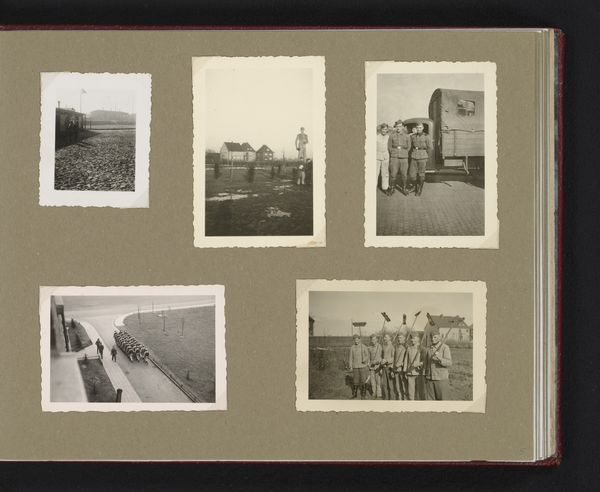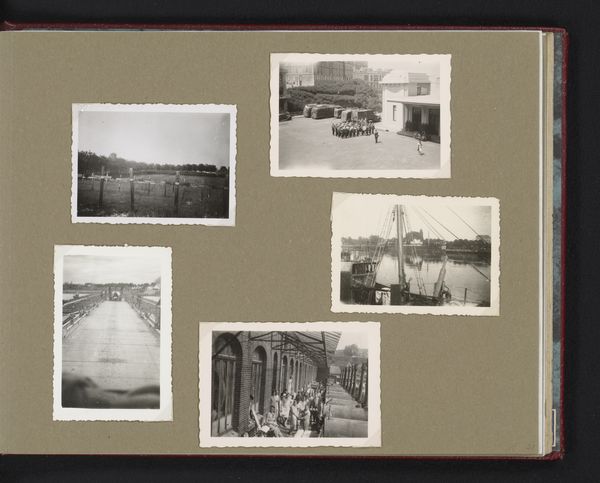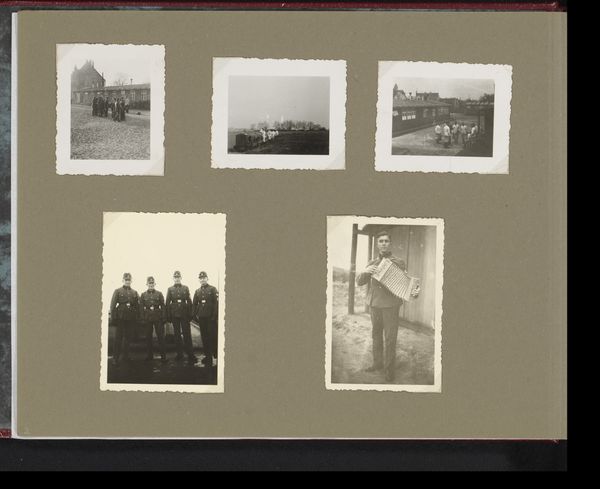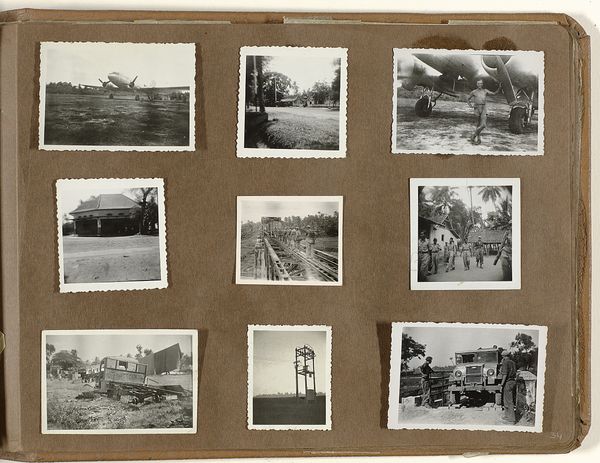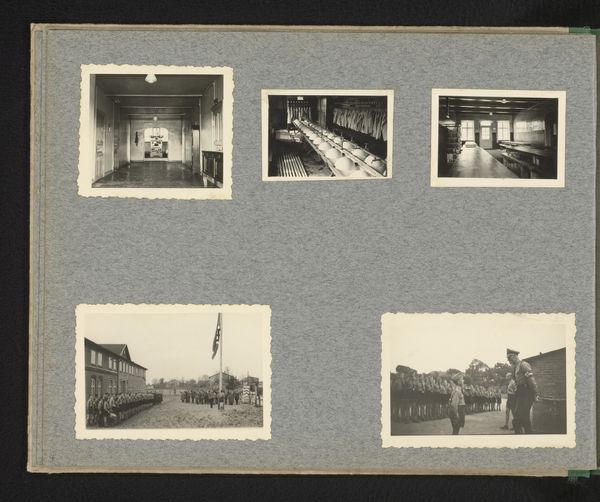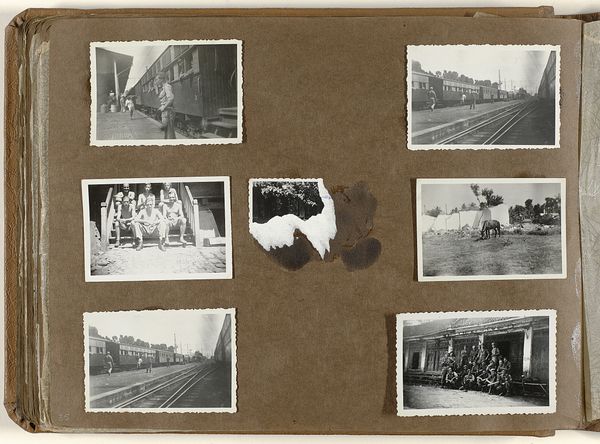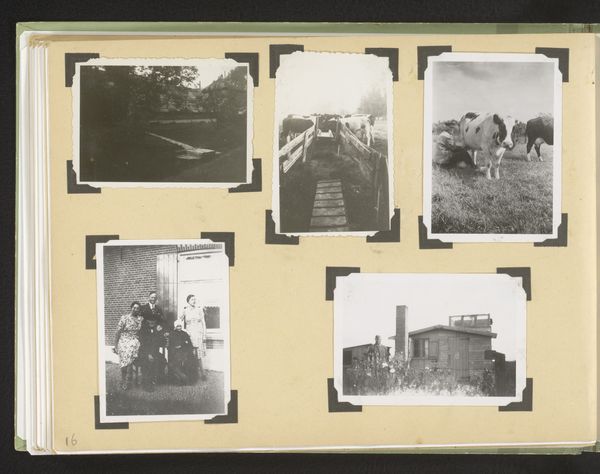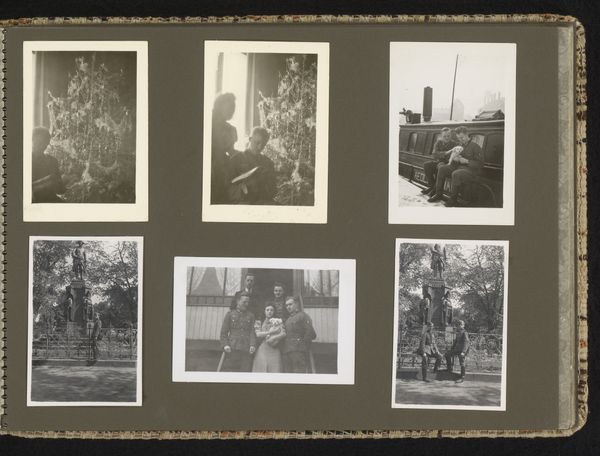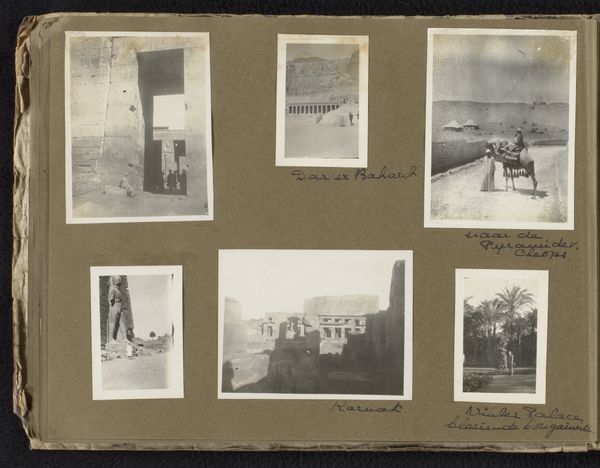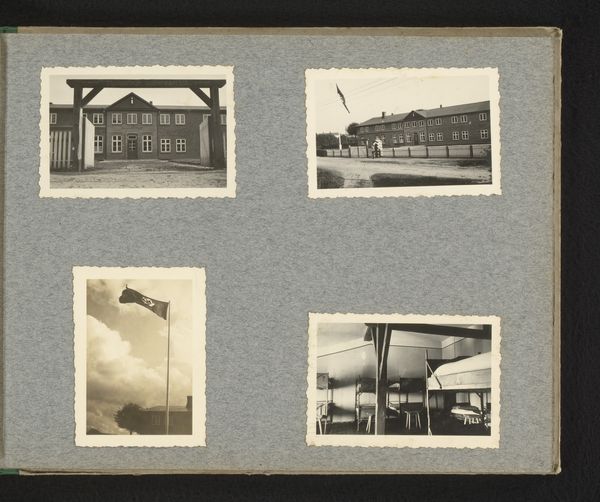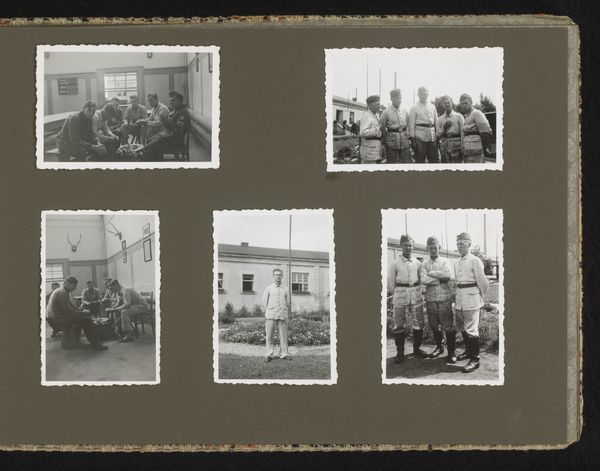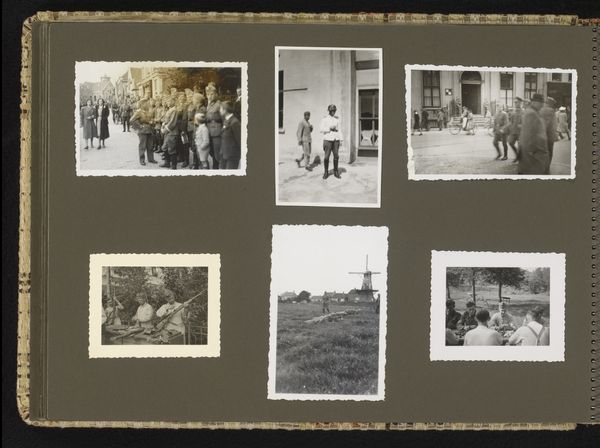
photography, gelatin-silver-print
#
portrait
#
landscape
#
photography
#
gelatin-silver-print
#
history-painting
#
modernism
#
realism
Dimensions: height 90 mm, width 60 mm, height 210 mm, width 290 mm
Copyright: Rijks Museum: Open Domain
Curator: Here we have a photographic collection titled "In uniform en kazerne," which translates to "In uniform and barracks," dating from between 1935 and 1940. It's a gelatin-silver print currently held at the Rijksmuseum. Editor: Gosh, what strikes me first is the mundanity, you know? It’s this odd jumble of snapshots—barracks, a small-town street, a soldier perched on what looks like a bench… it's like flipping through a regular photo album, but then the uniforms and the Nazi symbols yank you back to a grim reality. Curator: Absolutely. These photographs, while seemingly ordinary, offer a chilling glimpse into the everyday life intertwined with the rise of National Socialism. Consider the setting: the stark architecture, the rigid poses. This work reflects the insidious nature of the regime that seeped into the domestic sphere. We need to remember the portraits and landscape style are often implicated in power structures. Editor: It's the emptiness that haunts me—the almost aggressively clean barracks with the single, colossal swastika. There is an absence of individuality… a manufactured homogeneity. And then that soldier outside, kind of slouching. Is that defiance, or just bone-deep weariness? The lack of emotion or affect feels deeply unsettling. Curator: And that tension you’re sensing gets at the crux of this photographic collection's political commentary. These images subtly but deliberately depict a society on the brink, entrenched within military ideology. The inclusion of ordinary settings—the town, for instance—highlights how pervasive this influence became. This seemingly realist depiction naturalizes that pervasive presence. Editor: It's fascinating how such stark black and white images, lacking overt drama, can be so incredibly unnerving. It lingers, you know? The weight of what those pictures represented then, and the echo of that horror now. Curator: Yes. Understanding the socio-historical moment these photographs emerged from gives them a new life and serves as a somber lesson as we interrogate power today. The banality that you observed makes the photograph so much more disturbing than a staged heroic pose. Editor: Well, I think it is one of those things you don’t forget after you have seen it.
Comments
No comments
Be the first to comment and join the conversation on the ultimate creative platform.

